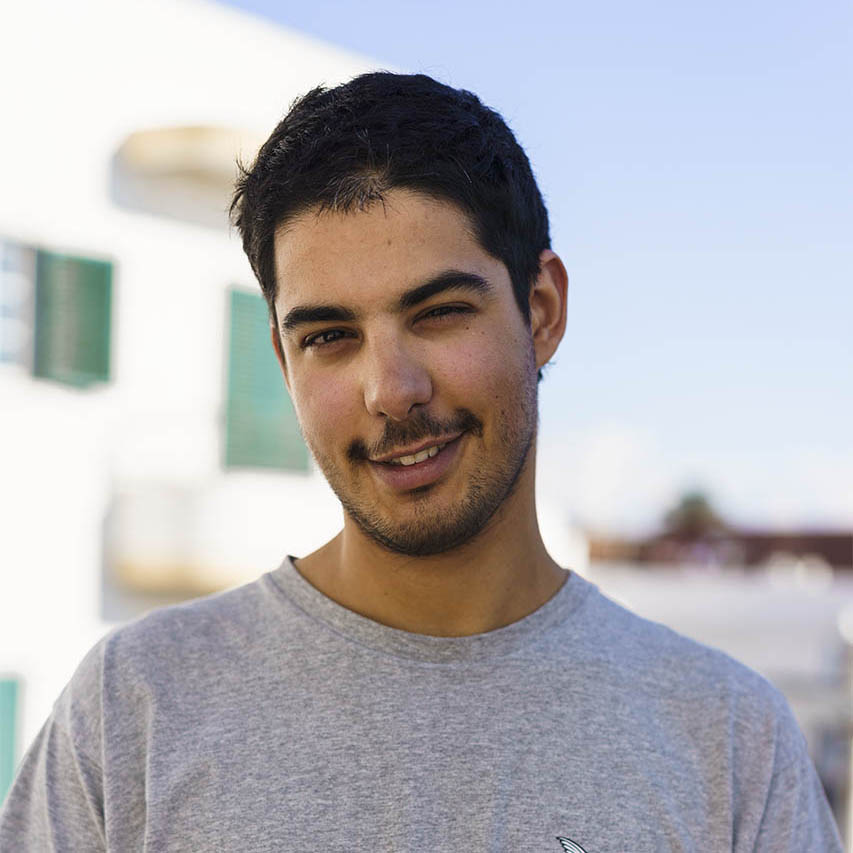In your paintings, you portray the connection between nature and human. How would you describe this connection?
I was born here in Faro, and I’m from this middle size city, but I like to go to nature and see the difference. To see how the people work there. I like how we humans try to interact with nature in our way. In nature, animals, trees, everything is not regular or symmetric. We, humans, try to put our way of thinking on it like: “This space is mine, so I will try to establish a construction so that everybody can see that“. I can’t say if this is good or bad but I think it’s interesting and it inspires me.
How do you process what you saw in what you do?
My biggest aesthetic inspiration is contemporary art. I somehow try to reproduce the contemporary art which exists since the second half of the 20th century in my paintings. But my inspiration is also nature. I try to use organic materials like coal. I’m not good at drawing, so if I want to draw a tree, I won’t draw it perfectly. I rather try to think about my reference to modern and contemporary arts and try to mix it with what I have seen.
If you change perspective now: How does nature perceive us humans?
I think we are animals but we try to build things. We try to change nature to comfort us. Other animals don’t do it. So I think nature could look at us like a strange animal who tries to live and destroy at the same time.
The motive of ruin can be found multiple times in your art.
I look at Faro’s castle wall. That wall has survived hundreds of years and it still is there. It’s a construction that humans did and it still is there. It’s the same for me if I see destroyed houses: it feels like time travel. I like to see how humans think and feel about the constructions of the pastime.
Cities are always changing: There are demolitions, renovations, and new buildings. Wouldn’t it be nicer if cities were more permanent?
Sometimes I think yes, but we can’t ignore the technology and everything new that is coming. I think cities must change, but the majority of the time, I think that they build it the worst. They construct small buildings on the side of small houses and I think it doesn’t make sense.


